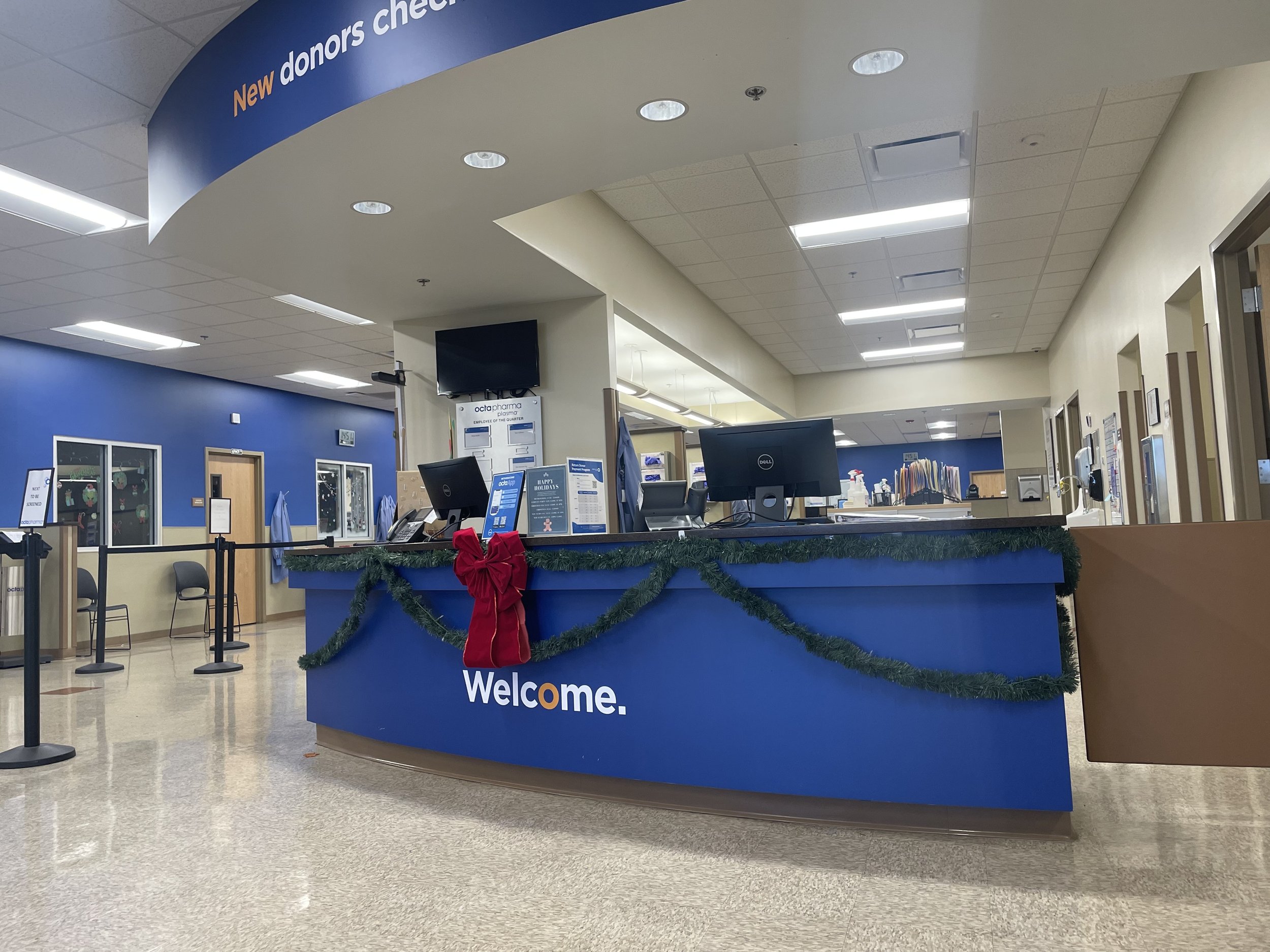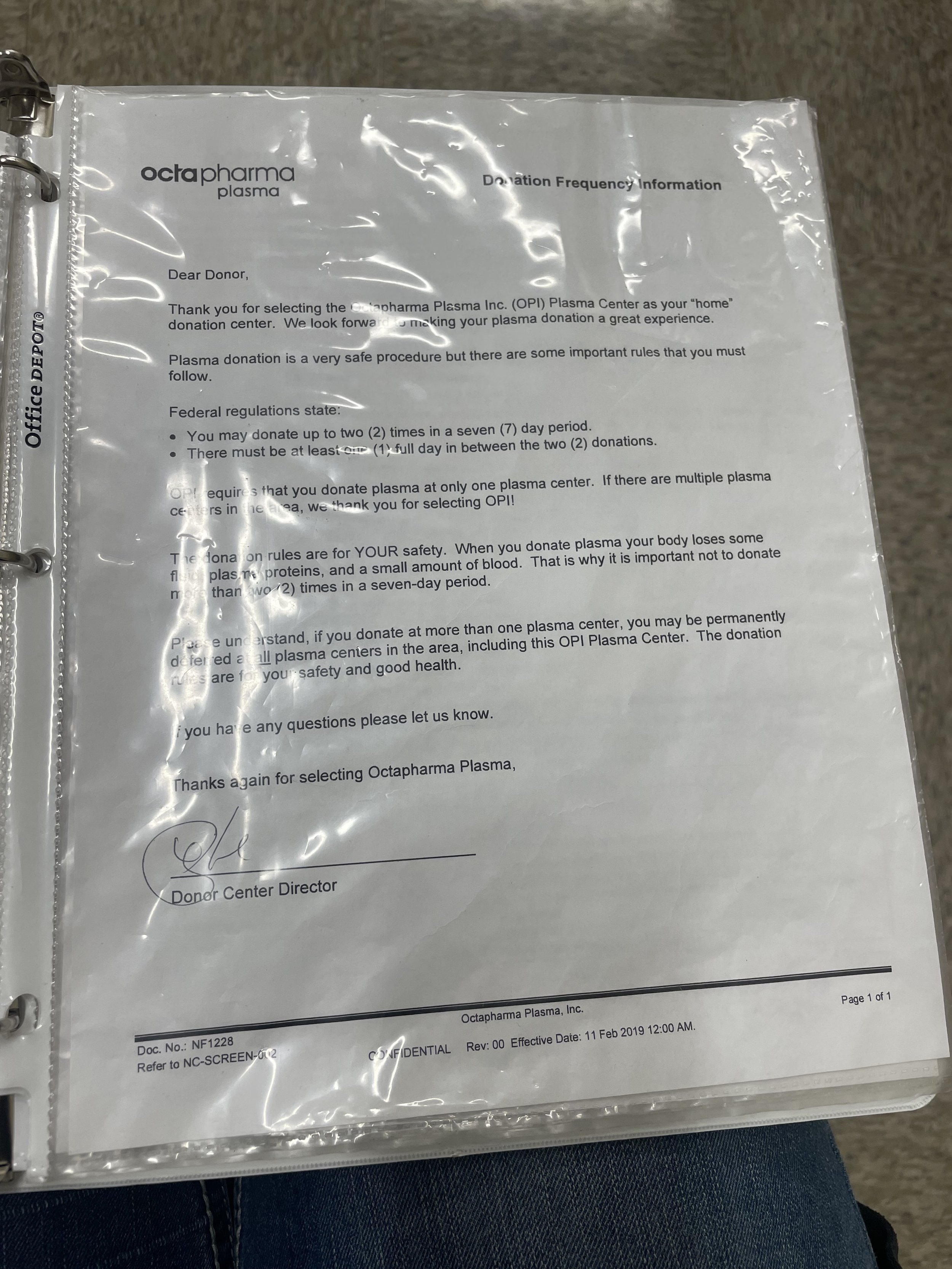As residents in northern Nevada struggle to make ends meet, many locals are donating their plasma at multiple donation centers. In mom’s groups, mothers ask questions about these places looking to get some cash to pay for Christmas gifts.
In this audio feature and report, Ember Braun tries it herself.
Donating plasma can be life saving for others. But what is plasma? And why do people donate? And why is it such a profitable business?
According to the American Red Cross, plasma is the “liquid portion” of blood, as opposed to red blood cells and other components. Plasma serves many functions for our bodies, including regulating blood pressure.
Plasma donations are commonly used to produce therapies, treat diseases and help patients in trauma centers and hospitals. For companies it can cost about $150 to collect a liter of plasma which can then be resold for $500. The plasma collecting industry is worth nearly $25 billion, with some saying it targets poor Americans, who could be paid more for their donations.
To learn more about what goes into donating, and how much money I could make myself, I went to a plasma donation center called Octapharma Plasma in Sparks, Nevada to try.
If it’s your first time donating, you’ll be asked to fill out a health questionnaire, and complete a physical examination.
The whole process took me about two hours. If you’re not a fan of needles, donating might be difficult.
My least favorite part was when the machine started returning my red blood cells back to me, along with saline - which helps with blood circulation. Because the saline was at room temperature, I started to feel cold.
I must say though, the healthcare professionals at the station were helpful. The phlebotomist who helped me walked me through the whole process and answered all of my questions. And at the end, I walked out with a prepaid card, holding 75 dollars for my time. All in all that was pretty good money for the time spent.
There are a few different plasma donation centers located in the northern Nevada area, including ones called CSL Plasma, part of the $10 billion pharmaceutical company CSL Behring and Grifols Biomat.
Not every local plasma donor though seems to have a good experience.
In response to a Reddit post on the Reno subreddit about donating their own plasma, some people commented on the inadequate level of training of some staff at these centers, as well as the fluctuation in pay that donors receive. Some commented on the side effects that happened after donating, including dizziness, vomiting, and fainting.
At the same time, there are avid fans of donating. Leanne Coleman donates twice a week at a local Grifols Biomat donation center.
“The staff is really great,” Coleman says. “They call you by your name when they know you and that makes me feel comfortable. I’ve never had a bad experience.”
Coleman, a Reno native, has been donating since June and heard about it through her friend.
She says that waiting to actually donate takes the longest. Sometimes, there isn’t enough staff to handle the amount of donors, but she feels the overall experience is worthwhile.
“It’s more to help people. I have some health issues sometimes, I’m not as bad as that person that needs the plasma,” Coleman concluded.
For me, it was rewarding to donate knowing that it would be helping others, even though I was nervous from start to finish. The biggest hold up for me? Definitely the needle.


